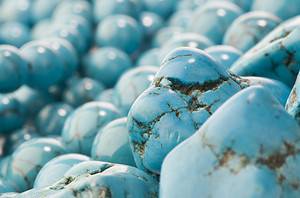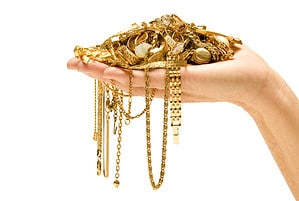Some gemstones, like quartz and amethyst, are extremely common and abundantly available. Others are extremely rare. Some of the rare gems in this list are finite and are no longer being mined. Others are available in only one place in the entire world. Some of the stones listed here are found only in private collections and are considered priceless. Others are available for purchase but will likely have a high price tag.
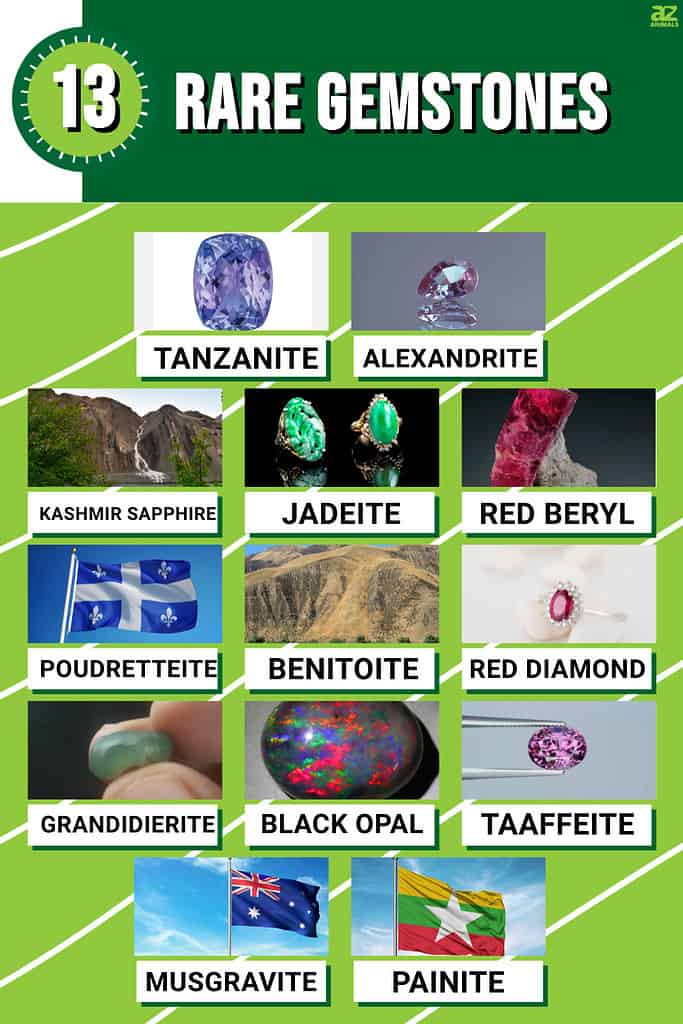
Some people believe that gemstones and crystals have special meanings or even powers, including these options that are hard to get your hands on. Even if you don’t believe in the power of gems, a special gemstone can be a beautiful decoration in your home or workspace. It can also provide a touchpoint for mindfulness as a pocket stone. Because of their rarity, only a select group of people get to experience the properties of the stones on this list.
#1 Tanzanite

Tanzanite is a gemstone that only comes from Tanzania.
©AllaboutDesign/Shutterstock.com
Tanzanite’s name comes from where it is found: Tanzania. It is a bluish-purple stone that generally appears in varying shades of blue in natural light, and purple with yellowing tints in artificial light. Tanzanite mines, which are only located in the foothills of Mount Kilimanjaro, are close to complete depletion, so fairly soon, it’s unlikely that new Tanzanite stones will enter the market.
Tanzanite is a popular gemstone for jewelry. They are currently as popular as diamonds but much more rare.
Tanzanite Hardness:
- Between 6 and 7 on the Mohs hardness scale
- Can scratch and chip easily
Tanzanite Meaning:
- Helps you reach your full potential
- Helps to clear the throat and third eye chakras
- Improve intuition and perception
- Increase understanding and compassion
#2 Alexandrite

Alexandrite changes color depending on the light.
©osinko/Shutterstock.com
This unique stone was discovered in the Ural Mountains of Russia in 1834. For a time, this was the only place it was found. In the 1980s, more Alexandrite was discovered in Brazil, Sri Lanka, and a few East African countries. They are also grown synthetically in labs. Natural Alexandrite is prohibitively expensive for most people, even for lower-quality specimens. Synthetic is also expensive, due to the complicated lab process.
Even though it’s expensive, it makes for beautiful and completely unique jewelry.
Alexandrite appears to change color from green and blue to purple and red, depending on the light. It is named for Czar Alexander II, because it was supposedly discovered on his birthday.
Alexandrite Hardness:
- 8.5 on the Mohs hardness scale
- There’s not much that can scratch it, but it can happen
Alexandrite Meaning:
- June birthstone option
- Stone for 55th wedding anniversary
- Increase creativity
- Accepting changes
- Staying centered
#3 Kashmir Sapphire
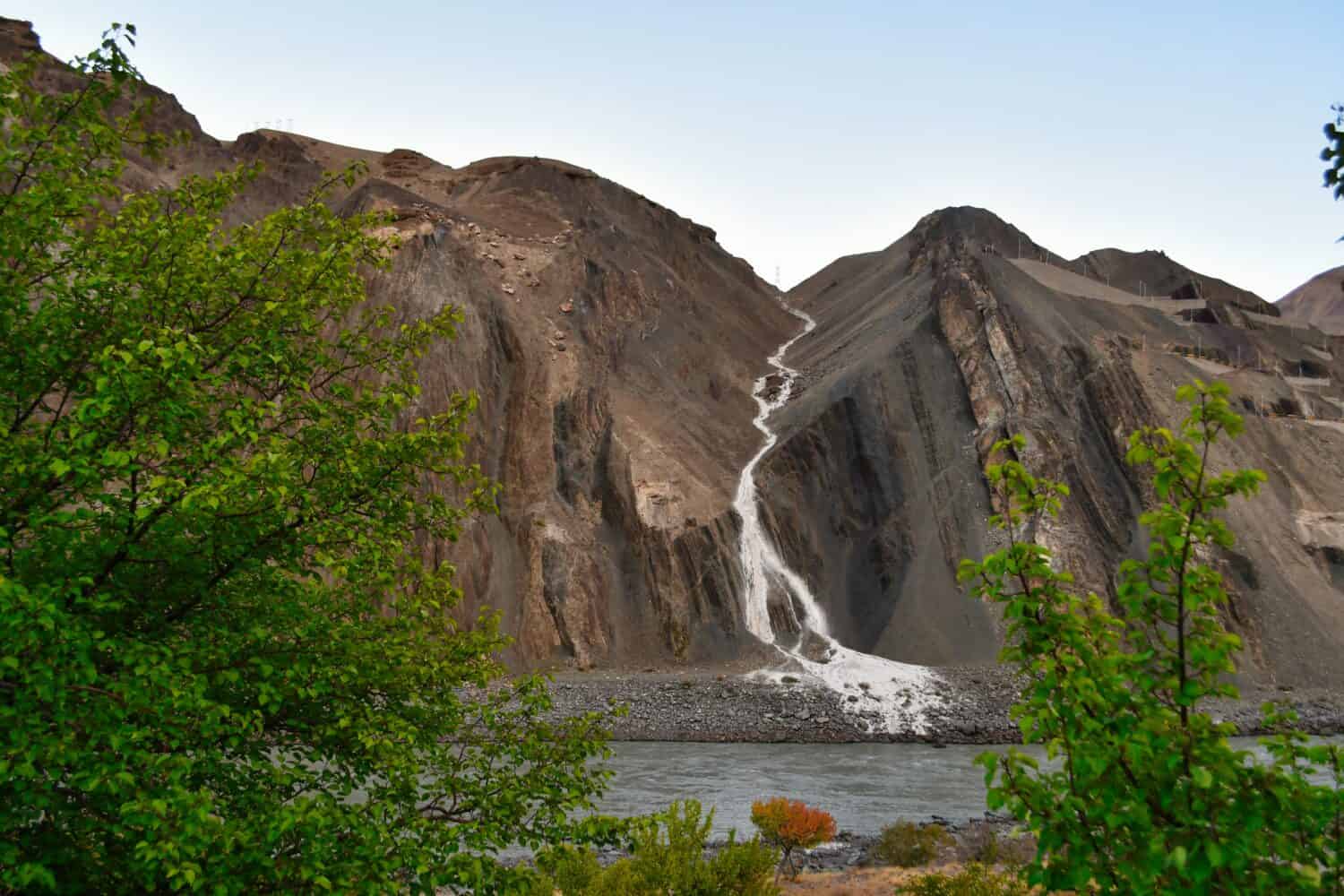
This is Fotu La Pass in the Zanskar Range, where Kashmir Sapphires are found.
©Sriman Emany/Shutterstock.com
Most people will only ever see a Kashmir Sapphire in a museum or a photograph. However, they are also found in some estate jewelry collections. They come only from the Zanskar Range in the Himalayan Mountains. There were two mines, the original mine, and a newer mine. Kashmir sapphires from the “old mine” are considered far superior. However, no official mining of Kashmir Sapphires has been done at the old mine since 1928 and very little was even found there since 1887.
Kashmir Sapphires are made into jewelry that sells for hundreds of thousands of dollars. A Kashmir sapphire without a jewelry setting may cost tens of thousands of dollars or more.
Kashmir Sapphires have the same meanings as all sapphires, with an added meaning of rarity, history, and exclusivity.
Sapphire Hardness:
- All Sapphires are a 9 on the Mohs hardness scale.
- They do not scratch easily. However, due to their rarity and value, care should still be taken with Kashmir Sapphires.
Sapphire Meaning:
- Birthstone for September
- Helps you to make good choices
- Enhances wisdom
- Helps with focus
- Has a healing energy
#4 Jadeite

These Jadeite rings are from Burma (Myanmar).
©W. Scott McGill/Shutterstock.com
Jadeite is found in small pockets in Myanmar, Russia, Japan, Guatemala, California, and The Alps. It is very important in Chinese and Mayan cultures. Jade and Jadeite get their names due to a legend of healing properties. In Spanish, it was called “piedra de ijada” or “stone of the side” because it was believed to heal kidney disease if applied to the skin near the kidneys.
Jadeite is green and is more desirable than Jade because of its rarity and different luster. Jadeite jewelry is prized and sells for thousands of dollars. The gem can be used in gemstone settings, but larger pieces can also be carved into figurines and bangles.
Jadeite Hardness:
- Between 6 and 7 on the Mohs hardness scale
- Can scratch easily, but resistant to chips and breakage
Jadeite Meaning:
- Similar meaning to Jade
- Good fortune
- Positive energy
- Can increase vitality and energetic forces
- Can help you be more independent
- Can bring good health
#5 Red Beryl
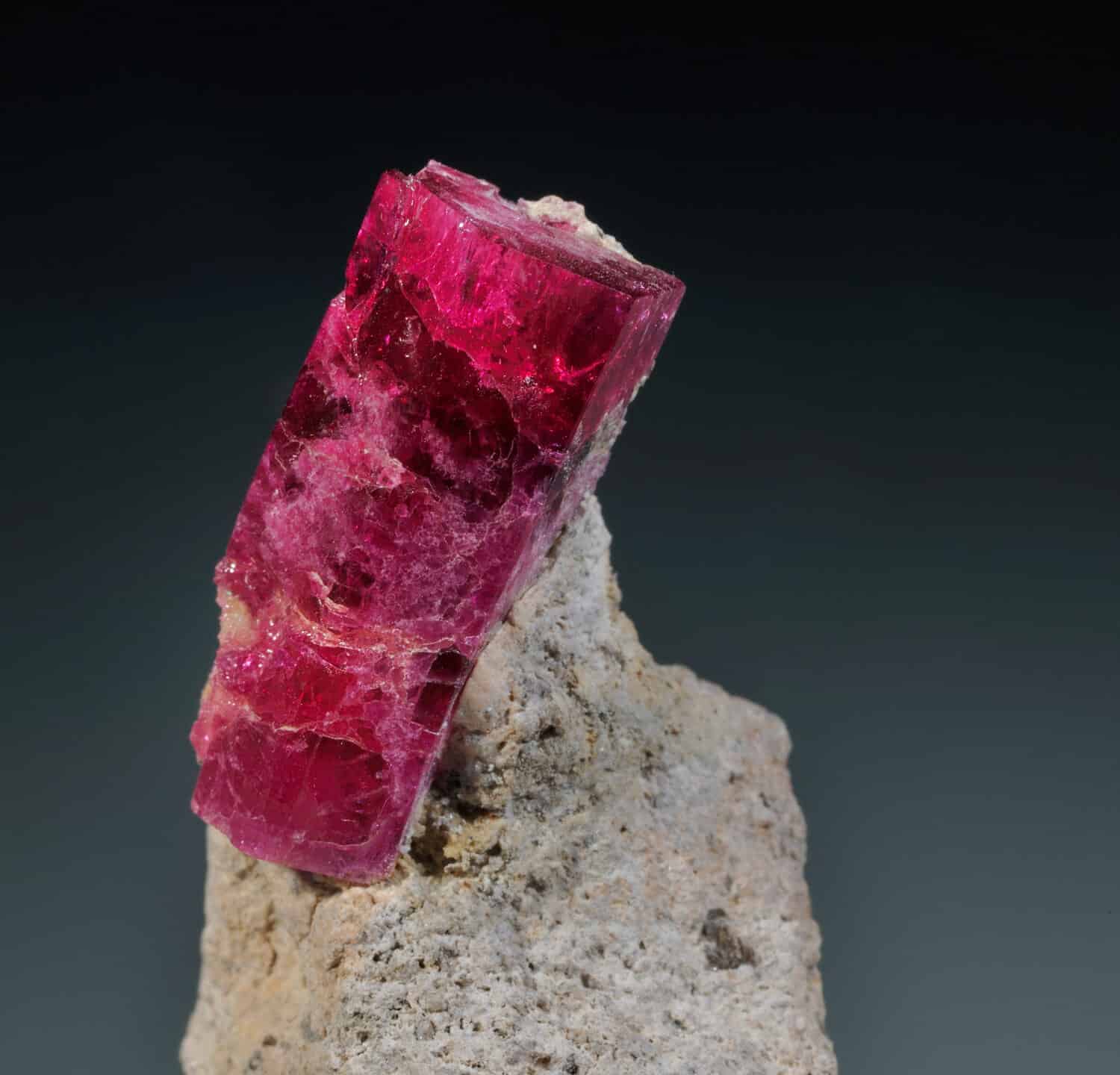
This is a photo of unfaceted red beryl.
©Breck P. Kent/Shutterstock.com
Red Beryl is a tiny gemstone that is only found in the Thomas and Wah Wah Mountains of Utah and the Black Mountains of New Mexico. They are rare because of their limited mining potential, and the fact atht they only come in small pieces, so it is rare to find one that is large enough to use for jewelry or as a gemstone.
Despite their rarity, red beryl crystals are more affordable than some of the other options on this list. You can usually find small crystals available for sale for a few hundred dollars. It is rarely used in jewelry because of the rarity of finding specimens large enough and of high enough quality. Those specimens are usually kept by mineral and gem collectors.
Red Beryl Hardness:
- 7.5-8 on the Mohs hardness scale
- Can scratch. Red beryl should be cared for like an emerald.
Red Beryl Meaning:
- Gives energy
- May speed metabolism
- Builds bravery and confidence
- May increase life force
#6 Poudretteite

Poudretteite was first discovered in Quebec, Canada.
©railway fx/Shutterstock.com
This pink crystal is named after the family that owned the Quebec mine where it was discovered in the 1960s. Very little jewelry is made from this stone because the first gem-quality example of poudretteite was not discovered until 2000 in Myanmar. That particular specimen is part of the Smithsonian’s National Gem Collection.
You can acquire tiny shards of poudretteite online for a few hundred dollars to use as decor or a meaningful crystal. However, they are almost never turned into gemstones for jewelry. According to the Gemstone Institute of America, even the most experienced gemologist will not see one of these rare stones in their entire career.
Poudretteite Hardness:
- 5 on the Mohs hardness scale
- Is brittle and can splinter and get scratched
Poudretteite Meaning:
- Because of their rarity, poudretteite’s meaning and significance have yet to be discovered
#7 Benitoite

These hills are in San Benito County, the site of the first benitoite mine.
©yhelfman/Shutterstock.com
The original Benitoite mine in the San Benito region of California is closed. So, unless geologists discover another pocket of this mineral, there won’t be any new Benitoite gemstones in the world. Other samples of Benitoite have been discovered in Montana, Japan, and Australia, but they are mineral quality, not gemstone quality.
Benitoite is clear and light blue in color. Small, faceted gemstones are a few hundred dollars. Specimens of over 1 carat are thousands of dollars. You can also find small examples of tumbled stone benitoite for less than $50.
Benitoite Hardness:
- 6-6.5 on the Mohs hardness scale
- Scratches easily
Benitoite Meaning:
- Opens third eye chakra
- Enhances intuition and perception
- Increases blissful and joyful feelings
#8 Red Diamond

An inexperienced gem enthusiast could easily confuse this ruby for a red diamond.
©feedbackstudio/Shutterstock.com
Diamonds are already a precious gem, and red diamonds are the most precious of them all. The largest red diamond is called the Moussaieff Red and is 5.11 carats. It sold for $8 million. A normal 5-carat diamond can cost as little as $50,000.
Red diamonds are made into jewelry that sells for several thousand dollars. A red diamond certainly makes for a unique engagement ring that can symbolize the fiery passion of love.
Red Diamond Hardness:
- All diamonds are a 10 on the Mohs hardness scale
- Only another diamond can scratch a diamond
Red Diamond Meaning:
- Passion
- Love and lust
- Can increase personal power
- Can be a symbol of fidelity and faithfulness
#9 Grandidierite
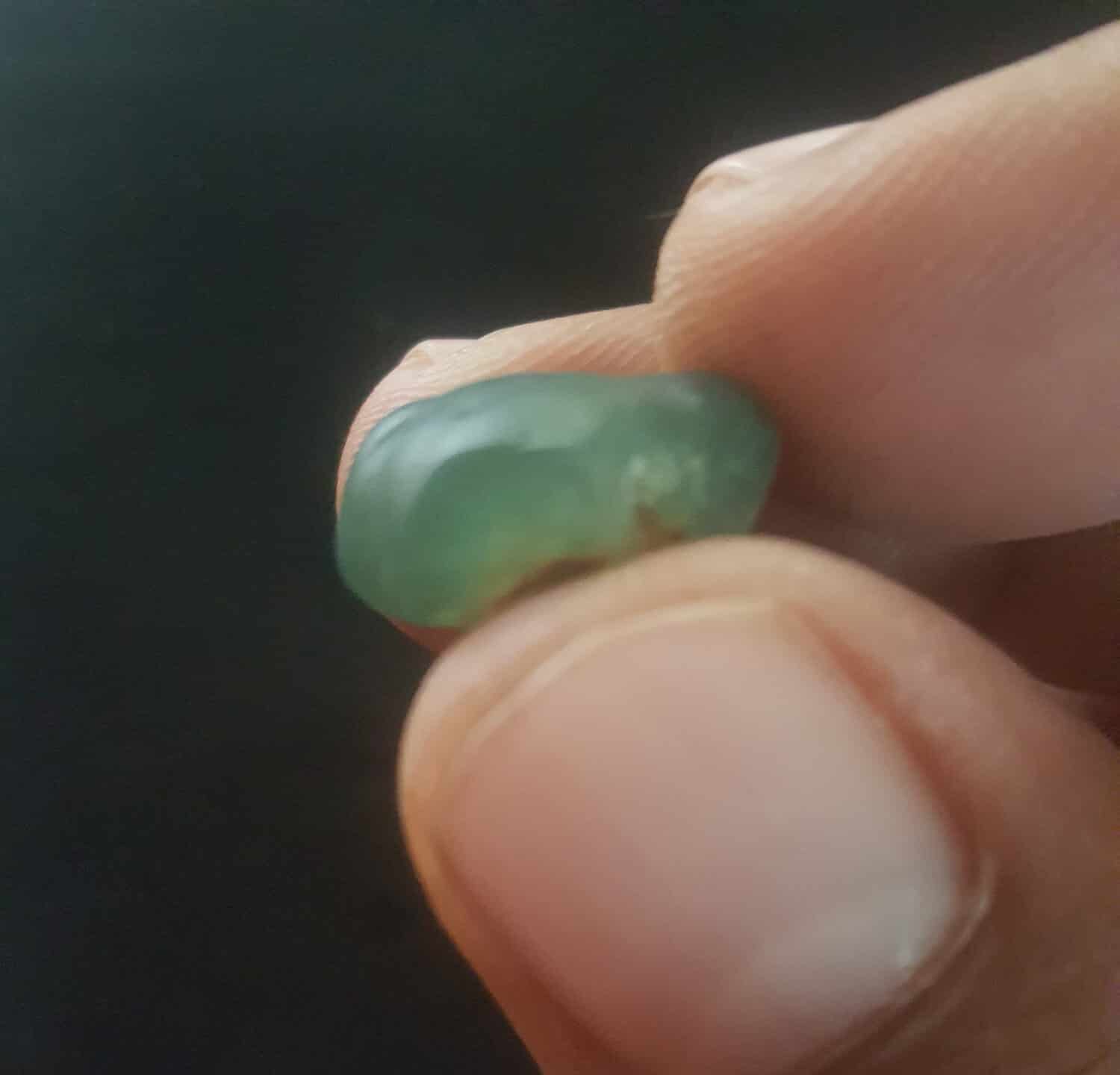
Even a small unfaceted piece of grandidierite could be quite expensive due to its rarity.
©devshi madam/Shutterstock.com
This blue/green stone is so rare that there are very few pieces of grandidierite jewelry in the world. However, a few deposits have been discovered more recently, so it’s possible this may become a more popular gem for jewelers to use. These special stones look different depending on the viewing angle. From one angle they are blue/green, from another clear or yellow, and from another darker green.
Grandidierite Hardness:
- 7.5 on the Mohs hardness scale
- Is hard enough for jewelry, although it is rarely used in that way
Grandidierite Meaning:
- May boost confidence
- Blue/green colors may be good for opening heart and throat chakras
#10 Black Opal
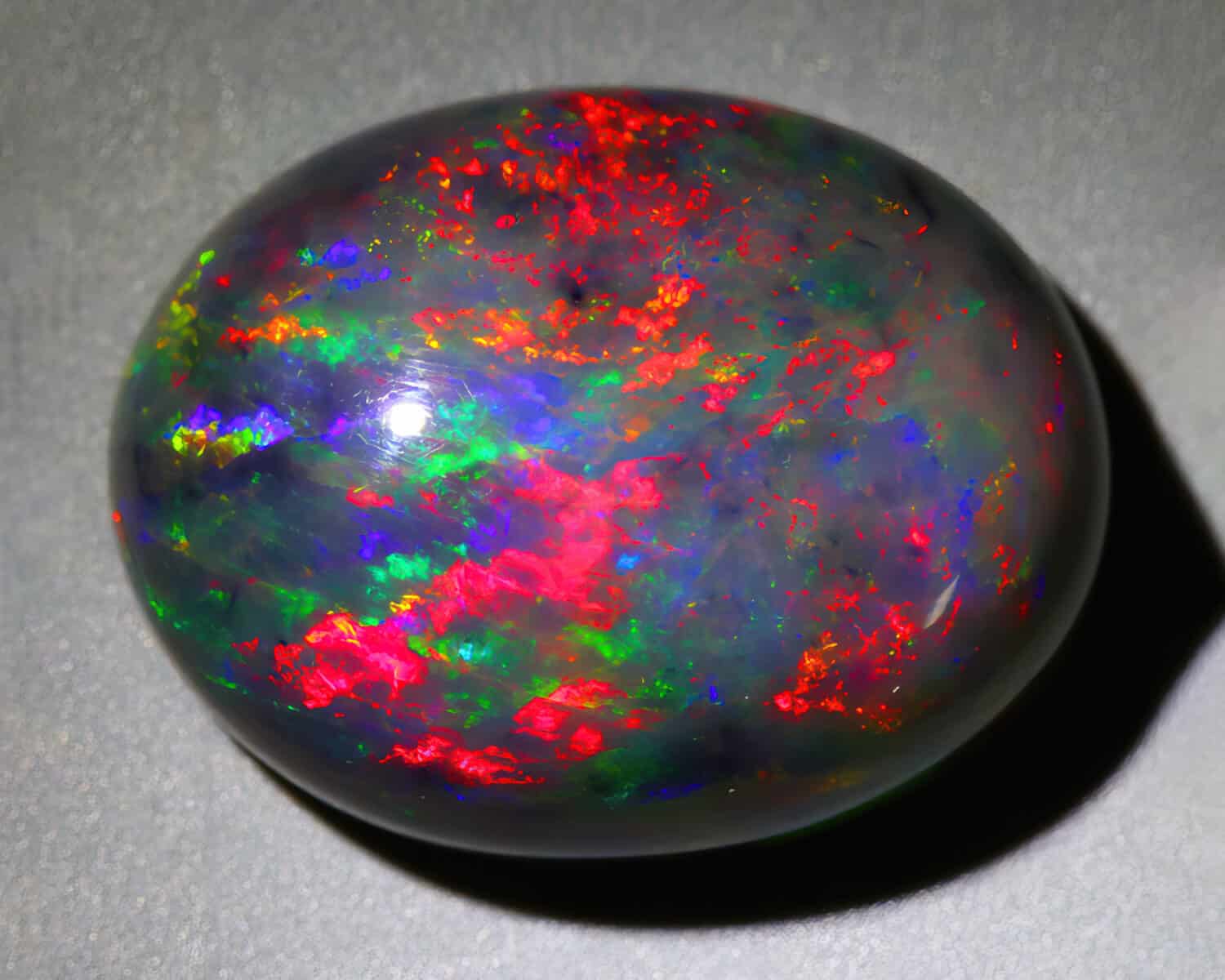
Black opals can be quite colorful.
©galka3250/Shutterstock.com
These incredible gems are found only on Thunder Ridge in Australia and in the Virgin Valley in Nevada. This is the rarest and most valuable type of Opal in the world. They are dark but have a variety of colors shining through, giving them a mystical look.
Black Opal is a popular gemstone to use in fine jewelry, for those who can afford it! Pieces made with Black Opal often sell for several thousand dollars.
Black Opal Hardness:
- Between 5.5 and 6.5 on the Mohs hardness scale
- These gemstones need to be handled with care to avoid scratching
Black Opal Meaning:
- Like Opals of other colors, Black Opals help with emotional openness
- The dark color brings an element of protection
- May boost intuition
#11 Taaffeite

It’s easy to confuse Taffeite with Spinel, which is pictured here.
©Perfectgemstore/Shutterstock.com
This pinkish-purplish mineral is so rare that since its discovery in 1945, there have only been a few samples of it until recently. Most Taaffeite specimens are only in private collections. The way this gemstone was discovered is pretty unique. A gemologist, Richard Taaffe Dublin, received a box of what he expected to be spinel. However, when he examined it, he noticed it was a completely different gem and had to trace where the gems came from to find out that it was a new gemstone.
Taaffeite Hardness:
- 8 on the Mohs hardness scale
- Would make great jewelry, but is so rare it is not used for that often
Taaffeite Meaning:
- Can bring good luck
- May increase energy
#12 Musgravite
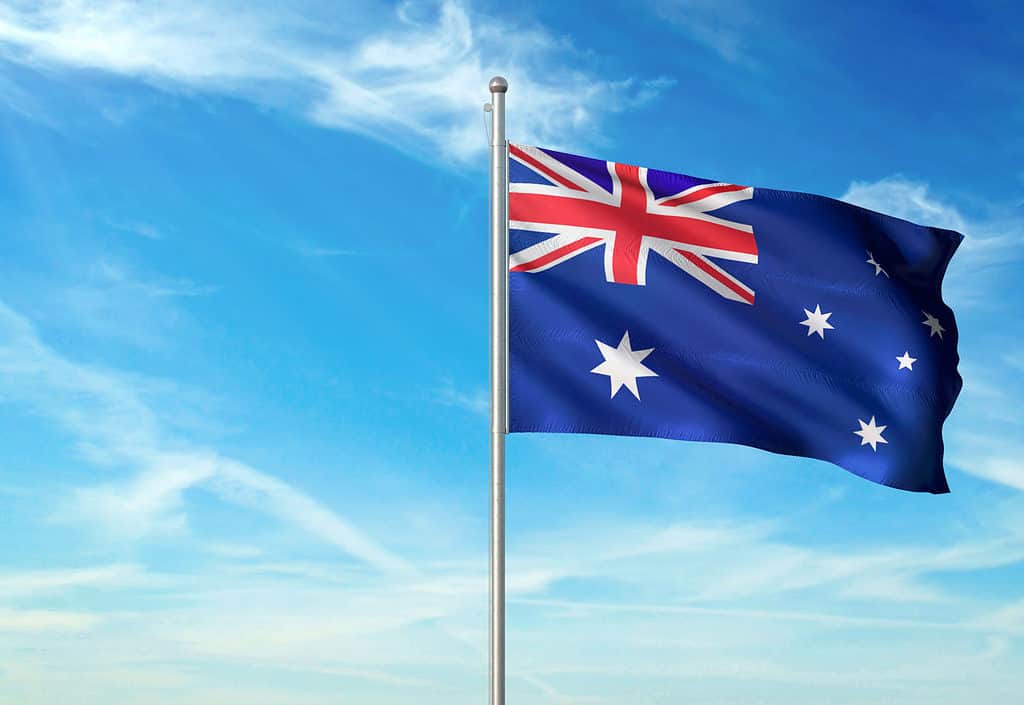
This rare gem was first discovered in Australia.
©iStock.com/Oleksii Liskonih
Musgravite is named after the area where it was first found: the Musgrave Ranges in Australia. However, it is also present in Antarctica, Greenland, and Madagascar. It is so rare that it is worth around $35,000 per carat. It is a transparent gem that ranges in color from smokey grey to dark green.
Musgravite Hardness:
- 8-8.5 on the Mohs hardness scale
- Hard enough to use for jewelry
Musgravite Meaning:
- It is so rare that its meaning is not yet known
#13 Painite

Myanmar is the only place where Painite has been found so far.
©Design_Bank/Shutterstock.com
There are quite literally only a few specimens of painite in the world. Its rarity is in part due to the fact that it is only present in one part of Myanmar. It is a red/orange stone that looks like a darker ruby once it is faceted. This gem is so rare that after it was first discovered, only two more painite crystals were found until 2001. Before 2004, only 2 of these crystals had been faceted into a gemstone.
Painite Hardness:
- 8 on the Mohs hardness scale
- Most of the recently found specimens include fractures, making it hard to facet into a gem for jewelry.
Painite Meaning:
- Experts are not sure of this gem’s meaning due to its rarity
History of Gemstones
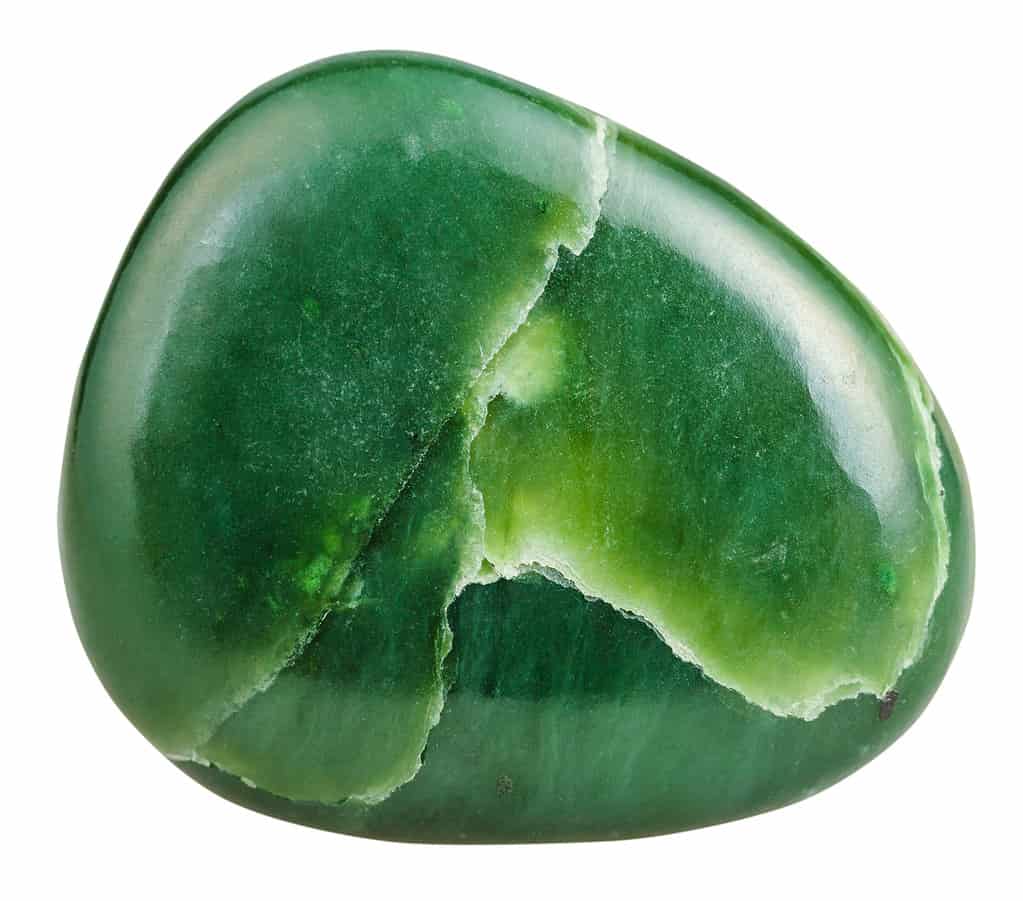
The Chinese used jade for ceremonial carvings.
©vvoe/Shutterstock.com
People have been using gemstones for various purposes since at least the Neolithic period, which started 6,000 years ago. Cultures have used them differently throughout history. Ancient Egyptians used lapis lazuli and amethyst in their jewelry. Ancient Chinese people carved jade into sacred objects, jewelry, and even ceremonial weapons. People in Ancient Greece and Rome used sapphire, garnet, and pearl in amulets, which they believed had positive qualities. Aztecs used gemstones, including turquoise and obsidian, in a variety of items such as musical instruments, ceremonial masks, and knives.
Ancient Indians were the first people to mine and use diamonds. They believed this precious gem was a gift from the gods. As there was no banking system yet, people in the area where the diamonds were abundant used diamonds as a way to store their wealth more efficiently, rather than carrying all their money with them.
Today, gemstones are widely available in jewelry, as crystals, and as minerals. Faceting gemstones for use in jewelry started in the 14th century. However, the tools for faceting stones were not developed until the 16th century. In the Victorian era, steam-powered machines made diamonds and other gemstones even more available and popular. The other technological advancements that followed have led to the gem industry as we know it today.
How to Identify and Purchase Rare Gemstones
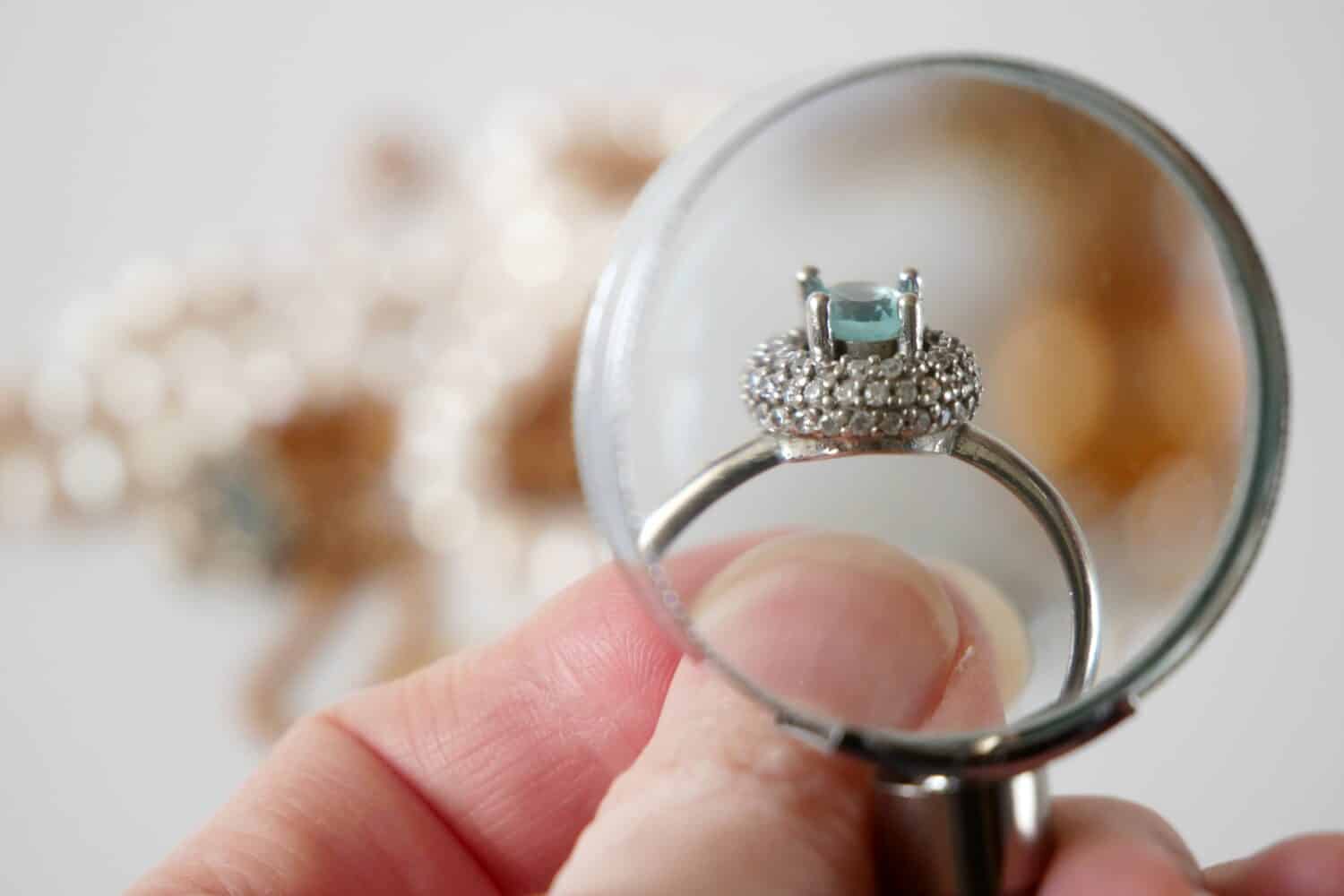
Tweezers and a loupe are two useful tools for basic gemstone identification.
©LanKS/Shutterstock.com
Before you buy a gemstone, especially a rare one, you need to verify that it is real. Some people prefer to let a gemologist or gemstone buyer identify their precious rare stones. However, if you are a gem enthusiast, you may want to learn how to do it yourself. The Gem Institute of America offers a gemstone identification class that could be a good option. Here are some tips for identifying gemstones yourself at a basic level. There are more advanced tools for gemstone identification, but this is a good place to start.
Tools for Gemstone Identification:
- Tweezers
- 10x Loupe
- Light
- Pen Light
Hold the stone about a foot away from you with the tweezers. View it with your eye and use a 10x loupe in natural light. You can also use a light source that resembles natural light. Check for the following:
- Hue – Try to define the exact color.
- Tone – The lightness or darkness of the color.
- Saturation – How saturated is the color? This scale goes from dull to vivid.
- Transparency – How see-through is the stone?
- Fire – How sparkly is the gem?
- Specific gravity – Does the gem weigh about as much as it is supposed to for its size?
After you’ve done a basic check, use your pen light to check for other characteristics such as cat eye or color changing.
Purchasing Rare Gemstones
Before buying rare gemstones, it’s important to do your research. You must be able to determine if the gem you want to buy is worth the price. If you’re interested specifically in rare gems, you need to make some connections with jewelers. As rare gems become available, they get snatched up quickly. So, it helps if you know some jewelers who know that you’re interested in buying rare gems. They may let you know when they get something special in stock.
Rare gems will likely come with a jewelry report that tells you everything about the gem you are purchasing. It’s important that you already know about gemstone qualities like hue, saturation, tone, and more, so you understand the report. Make sure you understand what the instructions for care of your gemstone as well.
How to Use Rare Gemstones
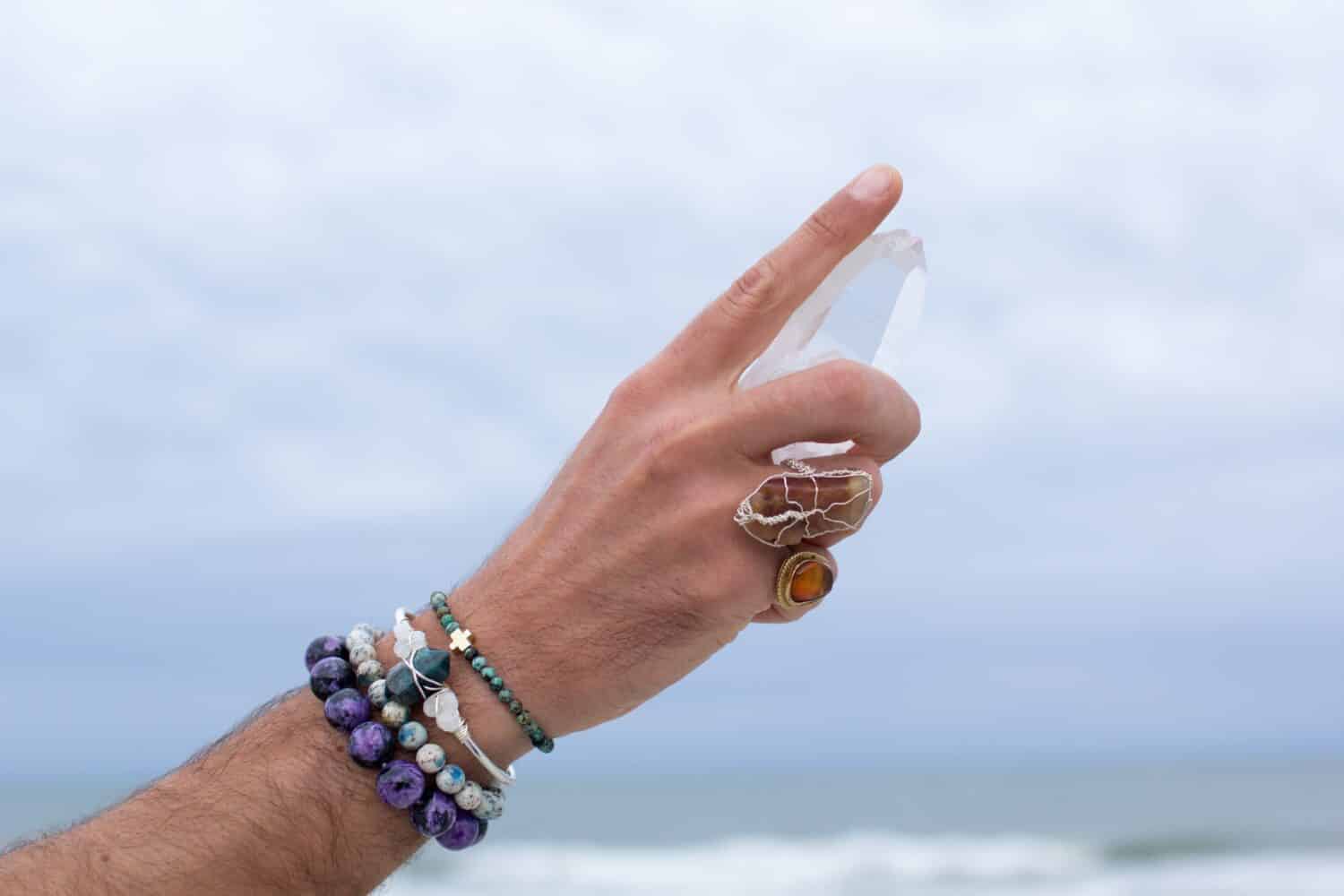
Wearing and holding gemstones are two ways to experience their benefits.
©Justin N/Shutterstock.com
You can use rare gemstones in the same way that you might use other, more common, types of gemstones. However, you may want to be more careful with them due to their higher value. Some rare gemstones can be made into jewelry. Others remain in crystal or mineral form because they are not gemstone quality. Here are some ideas for how to incorporate rare gemstones into your practices and get the most benefits from their meaning:
- Hold a rare gemstone while meditating
- Place a gemstone on a special altar
- Wear one as jewelry when you want to feel that stone’s quality
- Carry a gemstone in your pocket and touch it when you need to feel its strength
- Place crystals on your body where you need healing.
- Put a gemstone in your bathwater
- Carry one in your purse
- Place a small crystal under your pillow at night
- Put a gemstone on your desk at work to bring good energy
Summary of 13 Rare Gemstones and Their Meanings
| Gemstone Name | Hardness on the Mohs Hardness Scale | Meaning | |
| #1 | Tanzanite | 6.5-7.5 | Reach your full potential, clear throat and third eye chakras, improve intuition, increase compassion |
| #2 | Alexandrite | 8.5 | June birthstone option, stone for 55th wedding anniversary, increase creativity, accept changes, stay centered |
| #3 | Kashmir Sapphire | 9 | Birthstone for September, make good choices, enhance wisdom, increase focus, has a healing energy |
| #4 | Jadeite | 6-7 | Good fortune, positive energy, increase vitality and energetic forces, be more independent, good health |
| #5 | Red Beryl | 7.5-8 | Gives energy, may speed metabolism, bravery and confidence, increase life force |
| #6 | Poudretteite | 5 | Not yet discovered |
| #7 | Benitoite | 6-6.5 | Opens third eye chakra, enhances intuition, increases bliss |
| #8 | Red Diamond | 10 | Passion, love and lust, increase personal power, fidelity and faithfulness |
| #9 | Grandidierite | 7.5 | Boost confidence, open heart and throat chakra |
| #10 | Black Opal | 5.5-6.5 | Increase emotional openness, protection, boost intuition |
| #11 | Taaffeite | 8 | Good luck, increased energy |
| #12 | Musgravite | 8-8.5 | Not yet discovered |
| #13 | Painite | 8 | Not yet discovered |
The photo featured at the top of this post is © galka3250/Shutterstock.com
Thank you for reading! Have some feedback for us? Contact the AZ Animals editorial team.



